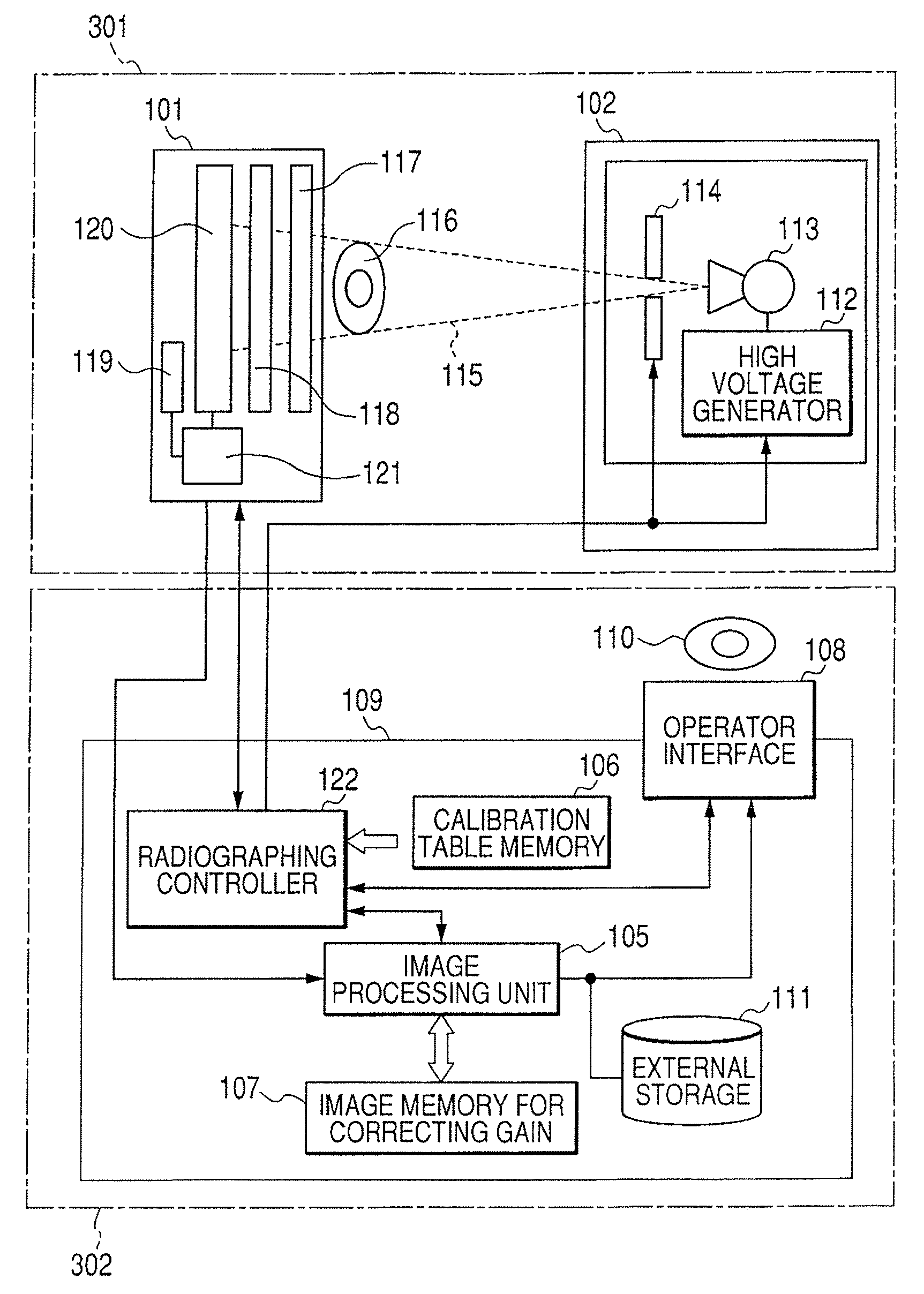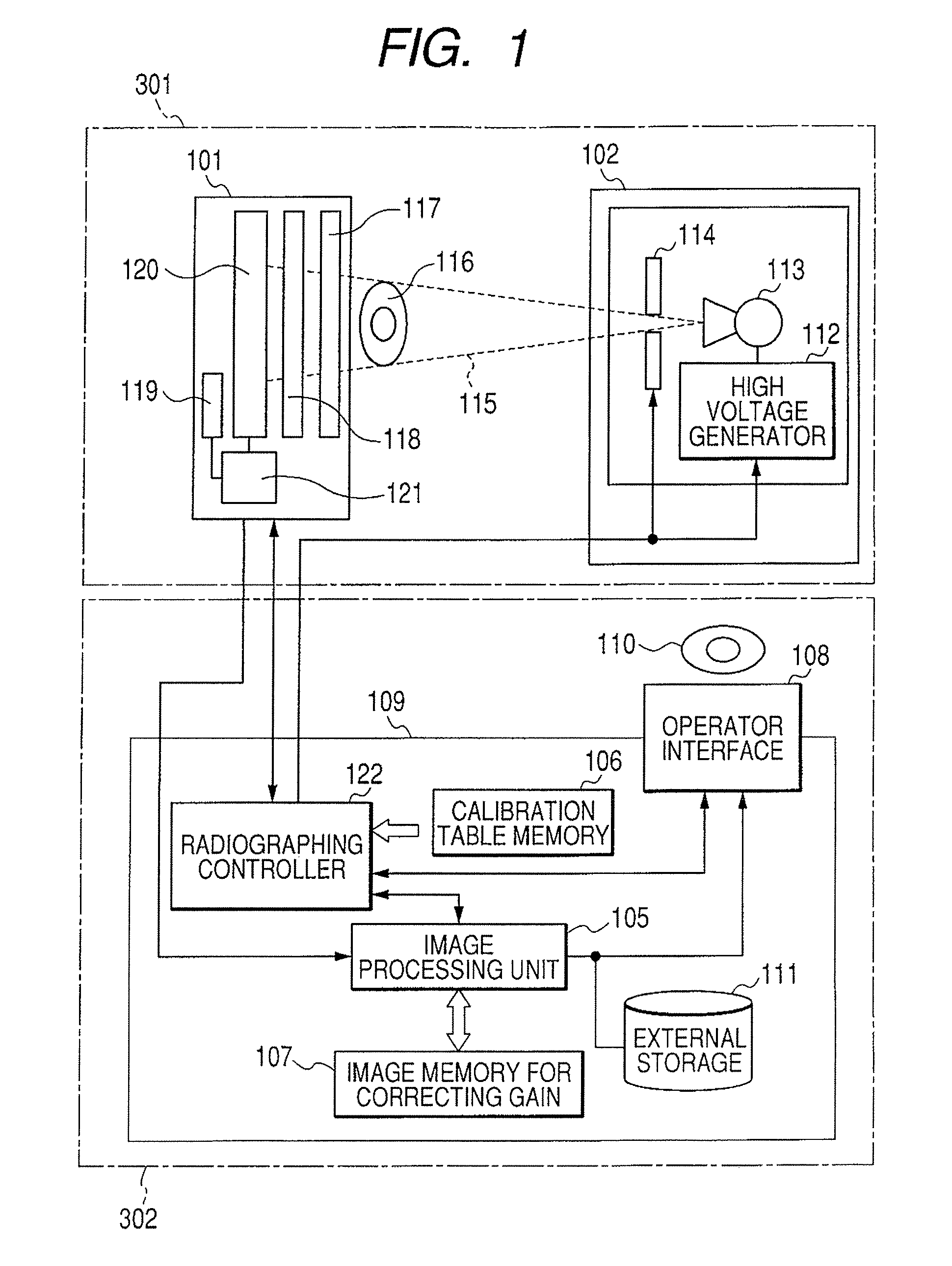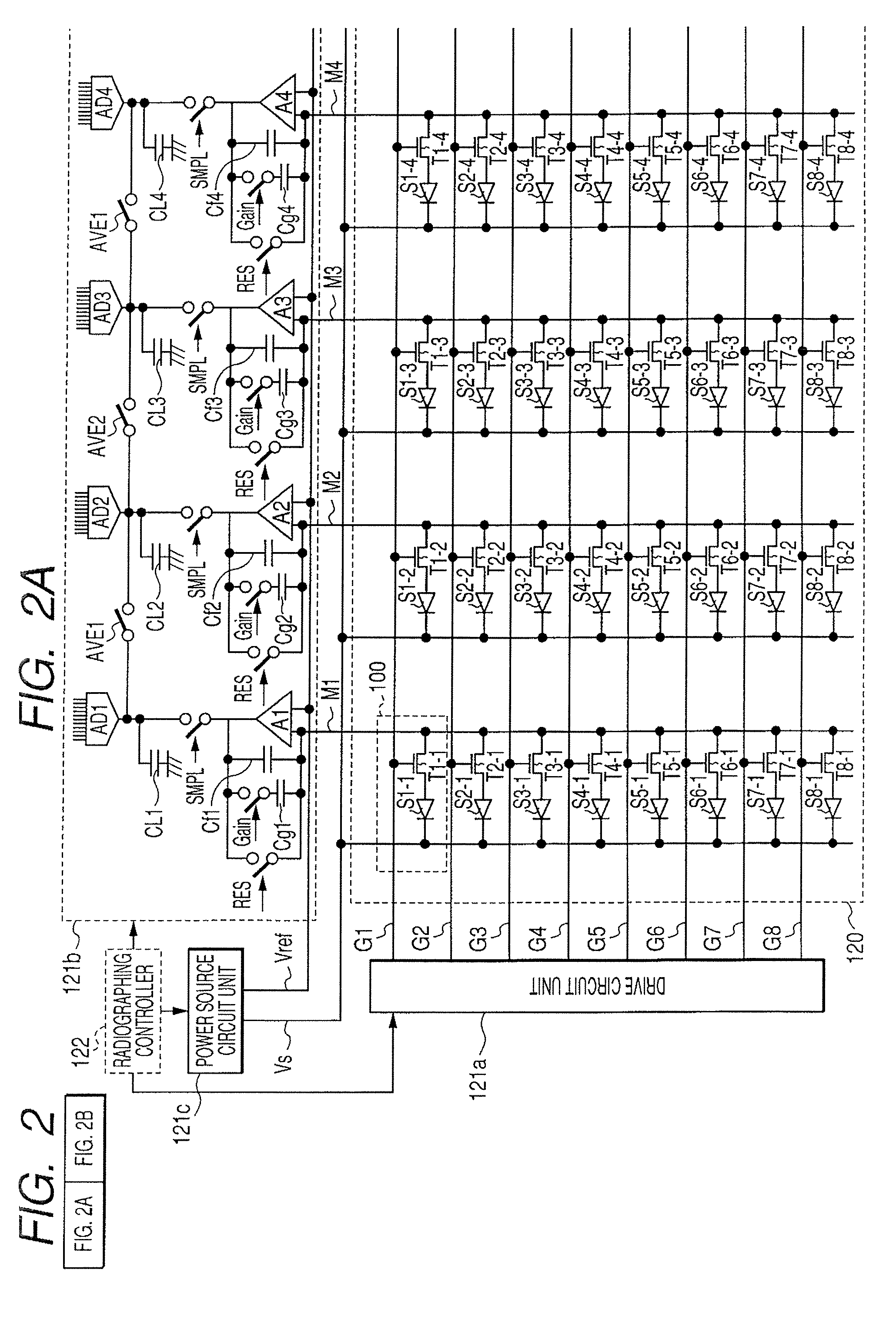Radiation imaging system and driving method thereof
a technology of radiation imaging and driving method, which is applied in the direction of material analysis by transmitting radiation, instruments, electrical apparatuses, etc., can solve the problems of shortening the read time, small noise in the addition of analogue signals, and high s/n, so as to shorten the read time, and increase the number of pixels
- Summary
- Abstract
- Description
- Claims
- Application Information
AI Technical Summary
Benefits of technology
Problems solved by technology
Method used
Image
Examples
first embodiment
[0045]FIG. 1 is a schematic configuration view of an x-ray imaging system according to a first embodiment. As shown in FIG. 1, the radiation imaging system of the present embodiment is configured by being divided into an x-ray room 301 and an x-ray control room 302. In the x-ray room 301 are placed an x-ray imaging apparatus 101 and an x-ray generator apparatus 102. Further, a control apparatus 109 for controlling the x-ray imaging apparatus 101 and the x-ray generator apparatus 102 is placed in the x-ray control room 302, and an engineer 110 is configured to control the x-ray imaging apparatus 101 and the x-ray generator apparatus 102 from the x-ray control room 302.
[0046]The engineer 110 performs a control for the x-ray imaging apparatus 101 and the x-ray generator apparatus 102 through an operator interface 108. This operator interface 108 comprises a touch panel on a display, mouse, keyboard, joystick, foot switch, and the like. The engineer 110 can set irradiation conditions of...
second embodiment
[0131]Next, a second embodiment of the present invention will be described.
[0132]The configuration of a radiation imaging system according to the second embodiment is the same as the radiation imaging system according to the first embodiment shown in FIGS. 1 and 2. Further, the processing in the radiographing operation of the radiation imaging system according to the second embodiment is the same as the processing in the radiographing operation of the radiation imaging system according to the first embodiment shown in FIG. 8. In the radiation imaging system according to the second embodiment, since the difference with the radiation imaging system according to the first embodiment is only about an acquisition processing of an image for gain correction, the description thereof only will be made in the following.
[0133]FIG. 9 is a flowchart showing the acquisition processing of the image for gain correction of the x-ray imaging system according to the second embodiment. That is, FIG. 9 ...
third embodiment
[0148]Next, a third embodiment of the present invention will be described.
[0149]In a radiation imaging system according to the third embodiment, the difference with the radiation imaging system of the first embodiment is only about information on a calibration table stored in a calibration table memory 106, and the description thereof only will be made in the following.
[0150]FIG. 10 is a view showing one example of the calibration table used for the x-ray imaging system according to the third embodiment.
[0151]The calibration table in the third embodiment shown in FIG. 10, as compared to that of the first embodiment shown in FIG. 3, is read as the driving conditions of the x-ray imaging apparatus 101, and is added with a cut off frequency (fc) of a low pass filter in the Amp of a readout circuit unit 121b.
[0152]Further, in the present embodiment, as the driving conditions in the x-ray imaging apparatus 101, other than those shown in FIG. 10, the mode forming a calibration table furt...
PUM
 Login to View More
Login to View More Abstract
Description
Claims
Application Information
 Login to View More
Login to View More - R&D
- Intellectual Property
- Life Sciences
- Materials
- Tech Scout
- Unparalleled Data Quality
- Higher Quality Content
- 60% Fewer Hallucinations
Browse by: Latest US Patents, China's latest patents, Technical Efficacy Thesaurus, Application Domain, Technology Topic, Popular Technical Reports.
© 2025 PatSnap. All rights reserved.Legal|Privacy policy|Modern Slavery Act Transparency Statement|Sitemap|About US| Contact US: help@patsnap.com



